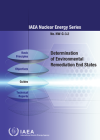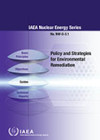Radiation technologies have a successful history of innovating new products and processes that are environmentally friendly. The IAEA helps develop, demonstrate and deploy appropriate technologies to address evolving environmental challenges.
Environmental remediation for industry
High energy radiation has the unique ability to induce profound chemical and biological effects in materials at room temperature and often without requiring the presence of any chemical additives. It produces reactive radicals that react with pollutants present in solids, liquids or gases, rendering them less harmful and amiable to further treatment by conventional technologies. Used commercially, this facility can bring considerable benefits to both the environment and society.
Environmental pollution: a challenge for sustainable development
Increasing industrialization and urbanization inevitably generates a number of environmental challenges in many areas of the world. More and more gaseous pollutants are released into the atmosphere. Vast amounts of municipal sewage sludge are being created. Water resources are polluted with so-called emerging organic contaminants, for example pharmaceuticals, insecticides, surfactants (substances that reduce a liquid’s surface tension) or endocrine disruptors (chemicals interfering with the body’s endocrine system).
POPs – Persistent Organic Pollutants – pose a significant risk to human health and the environment around the entire globe. They are organic compounds that are resistant to environmental degradation through chemical, biological and photolytic processes. At several occasions, the international community has called for urgent global action to reduce and even eliminate these chemicals.
While the Stockholm Convention on Persistent Organic Pollutants adopted in 2001 prohibits any new production and use of such chemicals as polychlorinated biphenyls (PCBs), these continue to pose considerable risks to human health and the environment. PCBs can enter the environment through leaks or releases from electrical transformers that contain these chemicals, through releases from contaminated sites, or as a result of waste incineration in municipal and industrial incinerators.
The IAEA supports the development, demonstration and deployment of radiation technology to treat industrial pollutants. With its assistance, radiation technologies are used to treat nitrogen oxides (NOx) and sulphur oxides (SOx) present in flue gases (combustion exhaust gas produced at power plants), as well as effluents from the textile dye industry. Through a process called ‘hygienization‘, they are also used to render sewage sludge fit for agricultural application.
The processes employed typically involve the use of industrial-scale electron beam facilities that can treat waste water (integrated with conventional biological treatment processes) or purify flue gas stemming from coal-fired boilers. Several Member States are also participating in pilot projects to treat PCBs in transformer oils, using an electron beam accelerator.
Through its coordinated research programme, the IAEA supports studies that investigate the radiation-initiated degradation of organics, which could be used to transform various pollutants into less harmful substances or reduce them to levels below permissible concentrations. Research undertaken in several Member States has demonstrated the usefulness and efficiency of radiation technology for the development of such processes.







